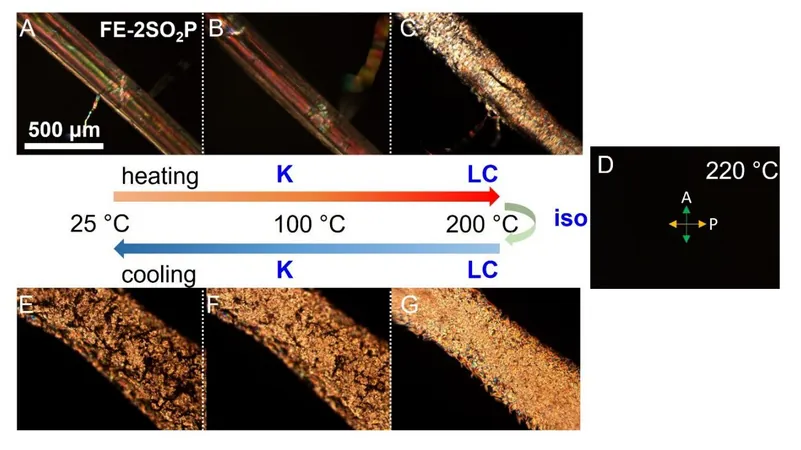
Revolutionary Eco-Friendly Plastic Set to Transform Wearable Electronics
2025-07-03
Author: Daniel
In a groundbreaking discovery, researchers at Case Western Reserve University have unveiled a new type of eco-friendly plastic that promises to revolutionize wearable electronics, sensors, and various electrical applications. This innovative material, known as a ferroelectric polymer, is crafted without fluorine—a notorious 'forever chemical' that poses serious environmental hazards due to its refusal to break down.
Despite ongoing efforts to enhance its electric and elastic properties, the potential applications of this flexible material are enormous, combining versatility with a commitment to sustainability. Lead researcher Lei Zhu, a professor at the Case School of Engineering, described how this material generates electrical properties in a fundamentally new way: "Unlike traditional ferroelectric materials, it doesn’t need to crystallize to maintain the polarity necessary for its unique electrical characteristics."
Details of this remarkable research have been published in the journal Science, and the innovative material is currently pending a patent.
Understanding Electronic Polymers
Polymers are extensive molecules made up of long chains of smaller molecular units, which can be either man-made, like plastics, or natural, such as hair or DNA. By modifying their molecular structure and length, polymers can exhibit varying degrees of strength, flexibility, heat resistance, and recyclability.
The Power of Ferroelectricity
Ferroelectricity refers to special materials exhibiting 'spontaneous polarization' that can be altered by applying an electric field—functioning like an on-off switch. Such materials pave the way for the creation of smaller, more efficient electronic devices, significantly reducing dependence on conventional energy sources.
A New Era of Flexibility
The new ferroelectric polymer created by Zhu and his team is notable for its flexibility and tunable electronic properties, allowing it to be turned on and off seamlessly. This flexibility is especially crucial in wearable technology, where sensors must be soft and pliable to effectively integrate with the human body. In contrast, traditional ceramic ferroelectric materials are often rigid and brittle.
While polymers like poly(vinylidene fluoride) (PVDF) are widely used, they present significant environmental challenges due to their non-biodegradable nature. Thankfully, this new innovation is completely free from fluorine and thus avoids the pitfalls of being a 'forever chemical.'
Wide-ranging Applications Await
The implications of this discovery extend beyond wearables; ferroelectric polymers are also promising candidates for sensors in ultrasound diagnostic tools due to their compatibility with biological tissues. Moreover, the technology holds exciting potential for use in augmented and virtual reality (AR and VR) goggles.
Zhu added, "While we are still in the development phase and exploring the properties of small quantities, we are thrilled about the possibility of replacing harmful plastics in sensors and detectors. The future looks bright for sustainable electronics!"


 Brasil (PT)
Brasil (PT)
 Canada (EN)
Canada (EN)
 Chile (ES)
Chile (ES)
 Česko (CS)
Česko (CS)
 대한민국 (KO)
대한민국 (KO)
 España (ES)
España (ES)
 France (FR)
France (FR)
 Hong Kong (EN)
Hong Kong (EN)
 Italia (IT)
Italia (IT)
 日本 (JA)
日本 (JA)
 Magyarország (HU)
Magyarország (HU)
 Norge (NO)
Norge (NO)
 Polska (PL)
Polska (PL)
 Schweiz (DE)
Schweiz (DE)
 Singapore (EN)
Singapore (EN)
 Sverige (SV)
Sverige (SV)
 Suomi (FI)
Suomi (FI)
 Türkiye (TR)
Türkiye (TR)
 الإمارات العربية المتحدة (AR)
الإمارات العربية المتحدة (AR)